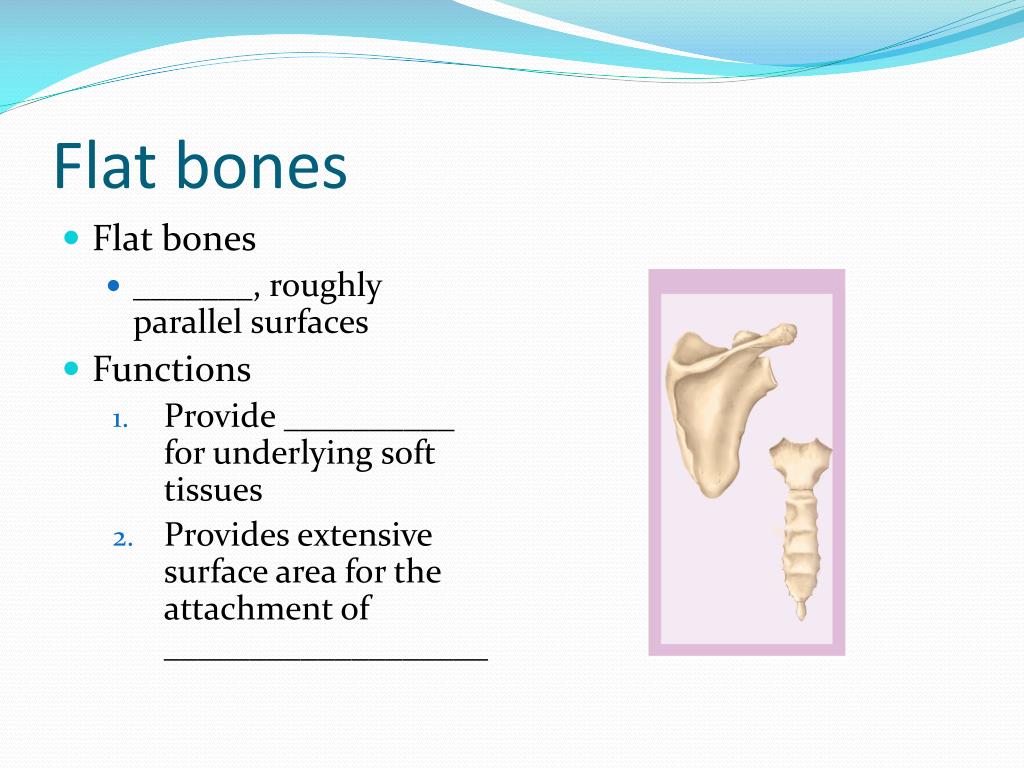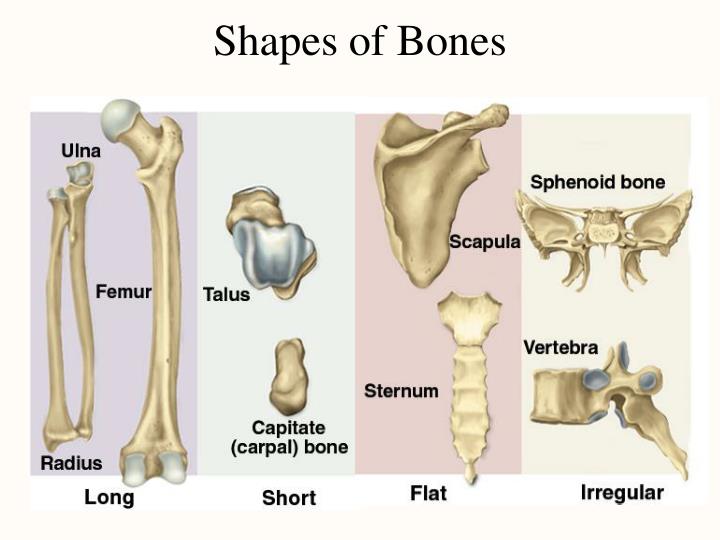
They may be found between the flat bones of the skull. Sutural bones are small, flat, irregularly shaped bones. The patella of the knee is an example of a sesamoid bone. Sesamoid bones develop inside tendons and may be found near joints at the knees, hands, and feet. The patellae are sesamoid bones ( Figure). Sesamoid bones are small, flat bones and are shaped similarly to a sesame seed. Examples of irregular bones are the vertebrae, hip bones, and several skull bones. These bones may have short, flat, notched, or ridged surfaces. Irregular bones are bones with complex shapes.

Examples of flat bones are the sternum (breast bone), ribs, scapulae (shoulder blades), and the roof of the skull ( Figure). For example, the bones of the wrist (carpals) and ankle (tarsals) are short bones ( Figure).įlat bones are thin and relatively broad bones that are found where extensive protection of organs is required or where broad surfaces of muscle attachment are required.

Short bones, or cuboidal bones, are bones that are the same width and length, giving them a cube-like shape. The long bone is covered by articular cartilage at either end and contains bone marrow (shown in yellow in this illustration) in the marrow cavity. Exceptions to this include the patella and the bones of the wrist and ankle. Most of the limb bones are long bones-for example, the femur, tibia, ulna, and radius. The rounded ends, the epiphyses, are covered with articular cartilage and are filled with red bone marrow, which produces blood cells ( Figure). The diaphysis, or central shaft, contains bone marrow in a marrow cavity. Long bones are longer than they are wide and have a shaft and two ends. Shown are different types of bones: flat, irregular, long, short, and sesamoid. The bones of the human skeleton are classified by their shape: long bones, short bones, flat bones, sutural bones, sesamoid bones, and irregular bones ( Figure). The process of calcification only occurs in the presence of collagen fibers. Calcification is the process of deposition of mineral salts on the collagen fiber matrix that crystallizes and hardens the tissue. The mineral salts primarily include hydroxyapatite, a mineral formed from calcium phosphate.

It contains specialized cells and a matrix of mineral salts and collagen fibers. Bone, or osseous tissue, is a connective tissue that constitutes the endoskeleton.


 0 kommentar(er)
0 kommentar(er)
